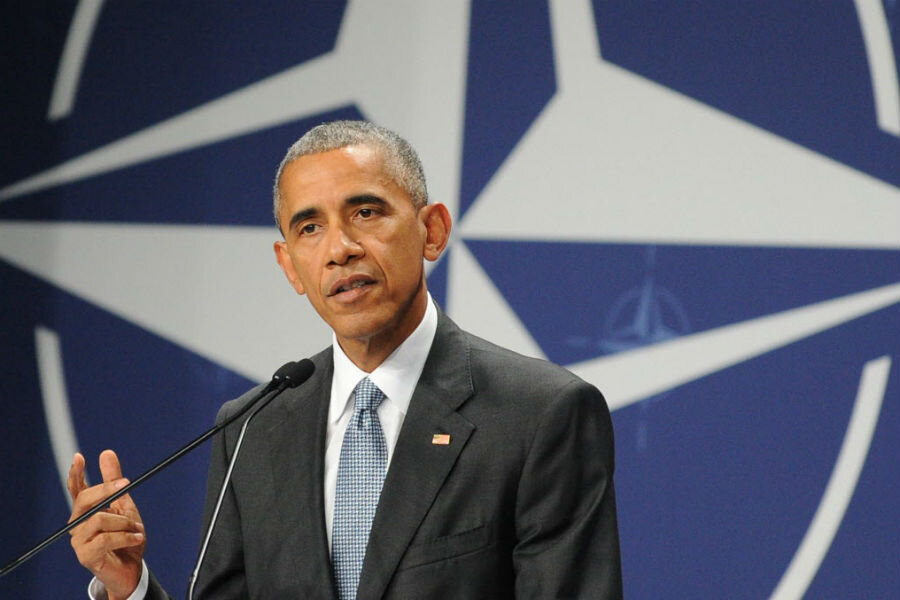Why 'America is not as divided as some have suggested,' according to Obama
Loading...
Speaking in Warsaw, Poland, on Saturday, President Barack Obama urged Americans to focus on unity following a series of police-related deaths last week, saying, "America is not as divided as some have suggested."
While "there is sorrow, there is anger, there is confusion" in the US, "there's unity in recognizing that this is not how we want our communities to operate," the president said in a news conference at the conclusion of a NATO summit. "This is not who we want to be as Americans and that serves as the basis for us being able to move forward in a constructive and positive way."
Two days prior, five officers were fatally shot by a lone gunman at a Black Lives Matter rally in Dallas, as activists were protesting the deaths of two black men, Alton Sterling and Philando Castile, at the hands of police earlier that week.
The mass shooting spurred criticism of the Black Lives Matter movement from some conservatives who said the shooter was motivated by anti-police rhetoric from BLM activists. Presumptive Republican presidential nominee Donald Trump, who previously described supporters of the movement as "looking for trouble," said on Friday that America is "too divided" and that "racial tensions have gotten worse, not better."
As BLM protests continued as scheduled throughout the weekend amidst accusations, it appeared as though the shooting had only widened the divide between different camps of an increasingly polarized country.
The current state of racial tension in the US has drawn comparisons from some to that of the 1960s. But speaking on Saturday, President Obama rejected this comparison, pointing out the progress that has been made in race relations since then.
"You're not seeing riots and you're not seeing police going after people who are protesting peacefully," he said. "You've seen almost uniformly peaceful protests and you've seen, uniformly, police handling those protests with professionalism."
Despite political polarization being the highest it's been in decades, with Americans divided in their opinions on movements such as Black Lives Matter, Obama is one of many who say things are not as bad as they seem.
Media coverage marked by sensational headlines rarely reports what's going right, lamented columnist Frank Bruni in an op-ed for The New York Times following Thursday's shooting.
"It ignored how peacefully the protest in Dallas began and how calmly it proceeded up until shots rang out," Mr. Bruni wrote. "Black and white stood together. Civilians and cops stood together. Those cops were there precisely because they’d been briefed on the demonstration and brought into its planning. They were a collaborative presence, not an enemy one."
Collaborative efforts between law enforcement officers and the communities they serve have been growing in popularity across the country in recent years as departments explore the concept of "community policing."
"There’s a new national awareness and movement about racial bias and policing, and this is a very good development," Harry Levine, professor of sociology at Queens College who studies the arrest patterns of the NYPD, told The Christian Science Monitor's Harry Bruinius last year. "I think one of the most powerful forces affecting New York City and its police department is this growing awareness in the rest of America – it’s the policing equivalent of the Confederate flag."
Concern about racial bias and profiling has reached the highest level of US leaders, as reflected by the White House's Task Force on 21st Century Policing, unveiled last May, which aims to improve relations between municipal police departments and the black communities they serve.
As Nissa Rhee and Mark Sappenfield reported for The Christian Science Monitor in November:
Many experts agree that, by and large, the police community wants to serve the black community better. "I’ve been doing this work for 30 years, and I’ve never seen such a spirit of openness and trying to figure out what’s appropriate for policing as I’ve seen here," Tom Tyler, a Yale University professor of law and psychology, told the Monitor at a police summit in Chicago last month.
The challenge is conveying that message across what Mayor Emanuel called a "barrier of misunderstanding."
Some say transcending that barrier could be easier than we think.
"I think there may be only two groups in the United States that actually can understand each other," said Van Jones, co-founder of social justice nonprofit the Dream Corps, in a video for CNN following the Thursday shooting. Those two groups, Mr. Jones continued, are the two that appear most at odds with each other: young black people and the police.
"The police say they feel vulnerable," Jones said. "That's exactly what the kids in Black Lives Matter are saying, that they feel vulnerable.... Maybe that's a reason for them to actually have some common ground. We can actually, rather than turning on each other, turn to each other."
On Friday, police officials across the US, from Dallas to the NYPD, called for an end to "this divisiveness between our police and our citizens."
"Days like yesterday or the day before – they shouldn’t happen," said Malik Aziz, the deputy chief of police in Dallas, in an interview with CNN on Friday. "But when they do, let’s be human beings. Let’s be honorable men and women and sit down at a table and say, 'How can we not let this happen again?' and be sincere in our hearts."






